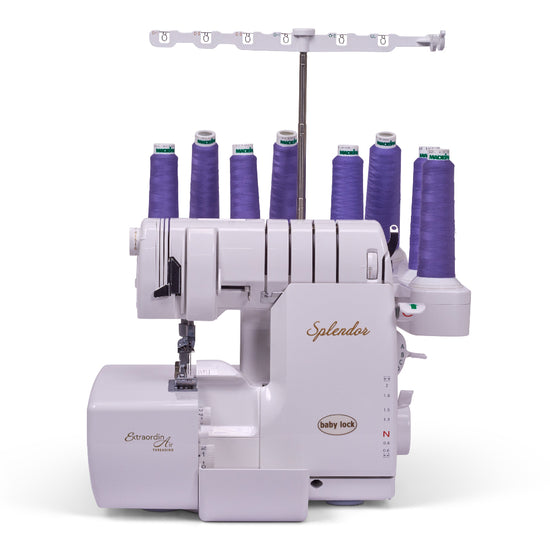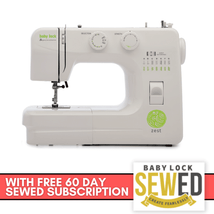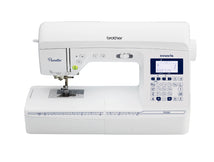Hello! Looking for a fun project to work on while you’re spending a bit more time at home? Look no further than the Ferris Fanny Pack by Sallie Tomato. The pattern comes in three sizes with an adjustable strap for over the shoulder or waist wear.

First up gather all your supplies. You’ll need the fabric as recommend as well as the Ferris hardware kit, thread and 2 zippers. You’ll see we are using zipper by the yard here.
Ferris Fanny Pack Pattern: https://sewing.net/products/ferris-pattern-lst133?_pos=1&_sid=0bae7c36b&_ss=r
Ferris Hardware: https://sewing.net/search?type=product&q=NOT+tag%3A__gift+AND+ferris+kit*
Zipper By The Yard: https://sewing.net/collections/zippers/sallie-tomato

The first thing I do with any pattern that include pattern piece is make a copy. You can use a scanner and printer at home or just trace with lightweight paper. You’ll especially want to make a copy of these pieces as the pattern is printed on both sides of the paper.
Carefully cut your pieces as directed in the pattern.

A Teflon pressing sheet is helpful when pressing interfacing. The sheet prevents anything sticking to your iron or pressing surface. As an added bonus the pressing sheet seems to get hotter allowing for better adhesion of the fusible fleece interfacing. Here you’ll see I’ve layered the fleece (glue side up), the exterior (right side up) and the pressing sheet. Press down on the entire sandwich for 8-10 seconds then lift the iron, shift to a new area and repeat until all fleece pieces are fused to the corresponding exterior pieces.

Make sure to read through your pattern before beginning for helpful information like the seam allowance. In this case it’s 3/8”. I used a small ruler and washi tape to mark the seam allowance on my machine as the 3/8” mark is difficult to see, and the washi tape makes it very clear.

I’ve cut my zipper by the yard to size and added the zipper pulls. Something I always do with zippers that have been cut down to size is whip stich the end of the zipper. This help hold the zipper together and keeps from accidently pulling the zipper pull off!

Construct your front pocket. Make sure to place the zipper pull on the side you prefer. Here you see it on the left side when the pocket is face up. This makes the zipper pull sit on the right-hand side of the body when the bag is worn on the waist.
Whenever I sew pieces to zippers like this, I always line up the bottom of the pieces and carefully press the seam away from the zipper before top stitching. This help to keep pieces even as you are working.

Next attach the sides. When ever you are working with curves or triangles you want to make sure that your seamlines match up. You can see in the bottom left photo that seam line passes through the point where the side piece and pocket piece line up. An additional step I take when sewing over zippers is to backstitch over the zipper tape. This adds extra security at a point that you will regularly be tugging or pulling. If you are using a nylon zipper you can sew right through the zipper. Please use caution if you are using a metal zipper.

Next, you’ll attach your main zipper. Make sure your zipper pull is on the same side as your front pocket zipper pull if you prefer the zippers to open the same direction. You’ll be sewing the zipper tape to the curved edge of Panel D. Sometimes it’s helpful to lay out the pieces together to check your work before sewing. This small curved piece is what gives the bag dimension when the construction is complete.

Attach Panel D to the bottom of the bag front.

Attach the Panel E pieces. Lining up the long edge of the pattern piece with side front and matching like sides right sides together pin the side together and stitch.

Construct your strap connectors. If you are using a heavy weight fabric you may find that the interfacing is unnecessary. Here you can see that the interfacing with this heavy denim makes the connector bulky and unnecessarily thick. I recut the strap connector and reconstructed it without the fusible fleece. The connector is still strong and durable and a much more manageable thickness. Apply the connector to the short flat edge of the bag as directed.

We’re almost there, it’s time to assemble the bag! Unzip the main zipper at least halfway to prepare for turning the bag right side out. Place the exterior pieces right sides together. You’ll notice that the back is slightly larger than the front. This is to accommodate the dimension that is added by the front Panel D. Just line up the edges evenly all the way around and stitch.

Attach the lining by lining up the lining pieces right sides together just like the exterior. Make sure to leave an opening on the curved bottom edge so that you can turn the bag right side out after attaching the lining. Make sure to backstitch at your opening!

Clip the corners and curved edges of your sewn bag and turn your bag right side out. Push out your corners and make sure that your bag looks great to you. Carefully turn the lining out and line up your opening tuck in your raw edge hand sew the opening closed.

Construct your strap. Join your straps together with a diagonal seam. This reduces bulk in the finished strap. Press a ½” seam at the short ends of the strap. Then fold your long strap in half. Take each raw edge to the center and fold again. Sew the long edges. You have now constructed a quarter fold strap.

Add the slider buckle.

Add the swivel hook.

Thread the strap back through the slider buckle and attach the remaining swivel hook. Clip your strap to the rings on the main bag.

Your bag is now finished! The bottom right image here is the medium Ferris placed on top of a completed large Ferris to give you an idea of the range of sizes provided in the pattern.
I’m looking forward to taking my Ferris Fanny Pack on many adventures in the future.


















